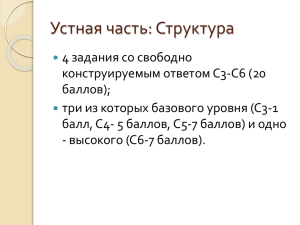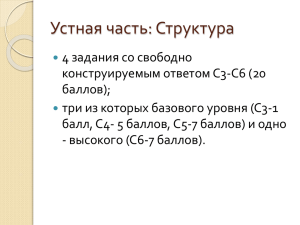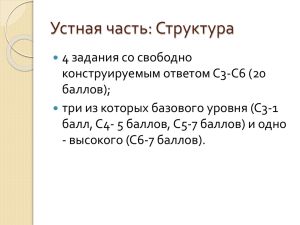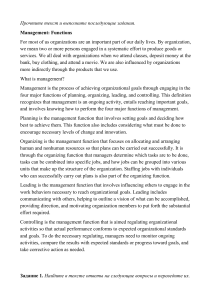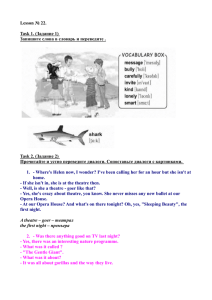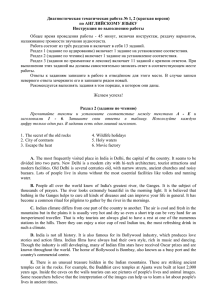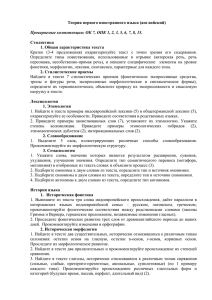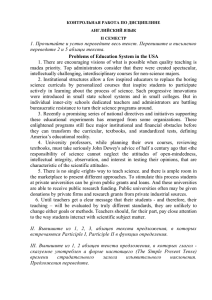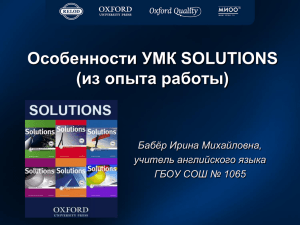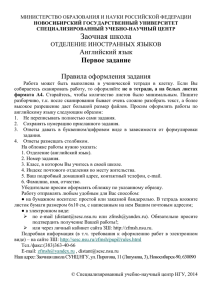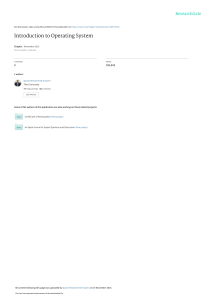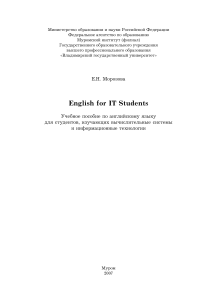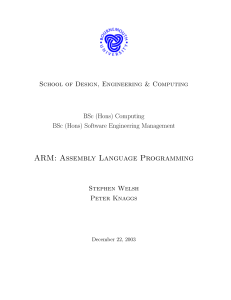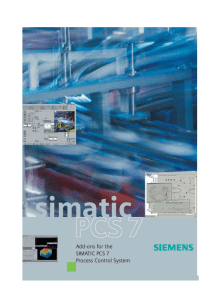
MICROPROCESSOR The microprocessor is a semiconductor device consisting of electronic logic circuits manufactured by using either a large-scale (LSI) or very-large-scale integration (VLSI) technique. The microprocessor is capable of performing various computing functions and making decisions' to change the sequence of program execution. In large computers, a CPU implemented on one or more circuit boards performs these computing functions. T\ic microprocessor is in many ways similar to the CPU, but includes all the logic circuitry, including the control unit, on one chip. The microprocessor can be divided into three segments: arithmetic/logic unit (ALU), register array, and control unit. Arithmetic I Logic Unit This is the area of the microprocessor where various computing functions are performed on data. The ALU unit performs such arithmetic operations as addition and subtraction, and such logic operations as AND, OR, and exclusive OR. Results are stored either in registers or in memory. Register Array. This area of the microprocessor consists of various registers. These registers are primarily used to store data temporarily during the execution of a program. Some of the registers are accessible to the user through instructions. Control Unit. The control unit provides the necessary timing and control signals to all the operations in the microcomputer. It controls the flow of data-between the microprocessor and memory and peripherals. Now the question is: what is the relationship among the programmer's instruction (binary pattern of Os and 1 s), the ALU, and control unit? This can be explained with the example of a full adder circuit. A full adder circuit can be designed with registers, logic gates, and a clock. The clock initiates the adding operation. Similarly, the bit pattern of an instruction initiates a sequence of clock signals, activates the appropriate logic circuits in the ALU, and performs the task. This is called microprogramming, which is, done in the design stage of the microprocessor. The bit patterns required to initiate these micro program operations are given to the programmer in the form of the instruction set of the microprocessor. The programmer selects appropriate bit patterns from the set for a given task and enters them sequentially in memory through an input device. When the CPU reads these bit patterns one at a time, it initiates appropriate micro programs through the control unit, and performs the task specified in the instructions. At present, various microprocessors are available from different manufacturers. Examples of widely used 8-bit microprocessors include the Intel 8085, Zilog Z80, and Motorola 68008 Earlier microcomputers were designed around 8-bit microprocessors; now these processors are generally used in embedded systems, which were the recent versions of IBM personal computers. Personal System/2 (Models 90 and 95), are designed around Intel 80486 32-bit microprocessor and single-board microcomputers such as the Intel SDK-85 and the. Microprocessors arecommonly used in college laboratories; the SDK-85 is based Professor is based on the Z80 microprocessor. I. COMMUNICATION Задание 1. Прочитайте текст и ответьте на вопрос Which units are not included in to the microprocessor? 1. a unit performing arithmetic and logic functions. 2. a unit consisting of various registers. 3. a unit exchanging data with other users. 4. a unit controlling the flow of data. Задание 2-5. Определите, являются ли следующие утверждения истинными (1) или ложными (2) согласно содержанию текста 2. CPU can carry out a lot of tasks. 3. Register array is used to store data permanently. 4. Control unit can not manipulate the flow of information between the CPU and memory. 5. There are many different computer companies producing various CPUs. Задание 6. Определите основную идею текста The article is about… 1. an architecture and features of the microprocessors. 2. the standard IBM PC. 3. the hardware interrupt management. 4. the relationship among the computer users. Задания 7-10. Соотнесите данные заголовки с соответствующими фрагментами текста (1,2,3,4) 7. the constituents of the CPU 8. the definition of the microprocessor characteristics. 9. different types of microprocessors available now. 10. an explanation of the task performing. II. ЛЕКСИКА Задания 11-15. Соотнесите термины с соответствующими определениями 11 unit 1 a small board made of silicon and germanium 12 instruction 2 a set of directions 13 system 3 a performance of a program 14 chip 4 a group of things or parts working together 15 execution 5 a part of a system having a specified purpose Задания 16-20. Заполните пропуски 16. The input sections transfer data and instructions in (двоичная система) from the outside world to the CPU. 1. numerical 2. digital 3. binary 4. symbolic 17. Memory (хранит) such binary information as instructions and data. 1.stores 2. keeps 3. provides 4. accepts 18. The instructions for assembling the radio are printed in (последовательность) on a sheet of paper. 1. queue 2. array 3. chaotic 4. sequence 19. Microprocessors (потребляют) very little power, are impact and of low cost. 1. use 2. consume 3. conclude 4. contain 20. The system (плата) includes the CPU, several built-in ROM-programs and some very important support chips. 1. flake 2. plate 3. board 4. unit Задания 21-25. Определите, какое слово не относиться к данной горизонтальной группе. 1 2 3 4 21. routine circuit application software 1 2 3 4 22. control supervise manipulate consider 1 2 3 4 23. aim purpose target accuracy 1 2 3 4 24. execute carry out run switch 1 2 3 4 25. locate integrate place record
